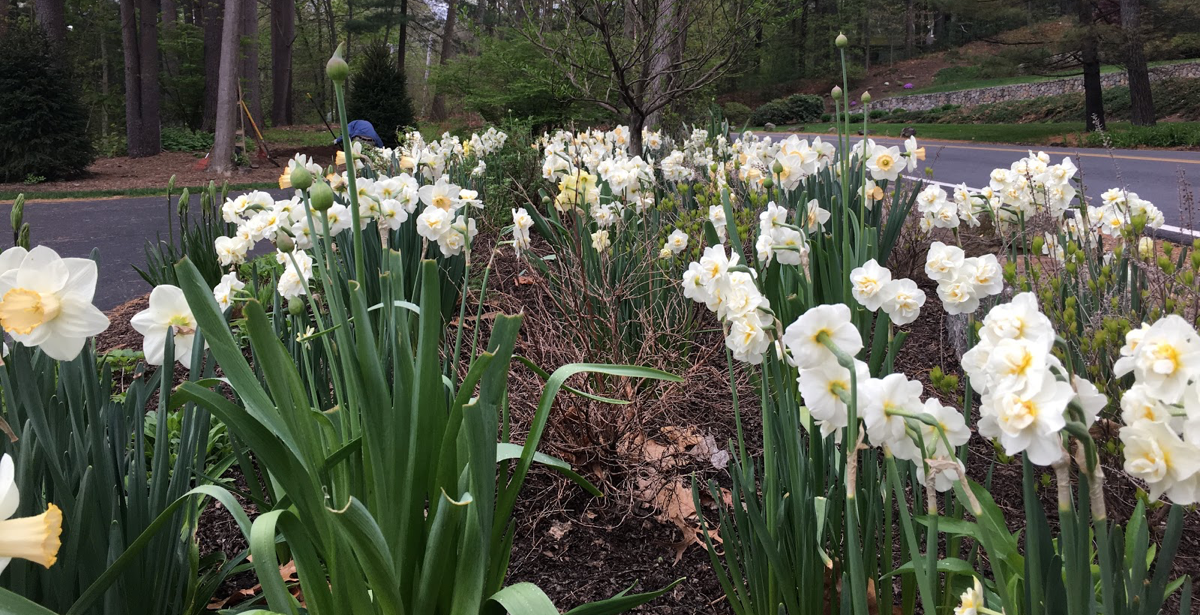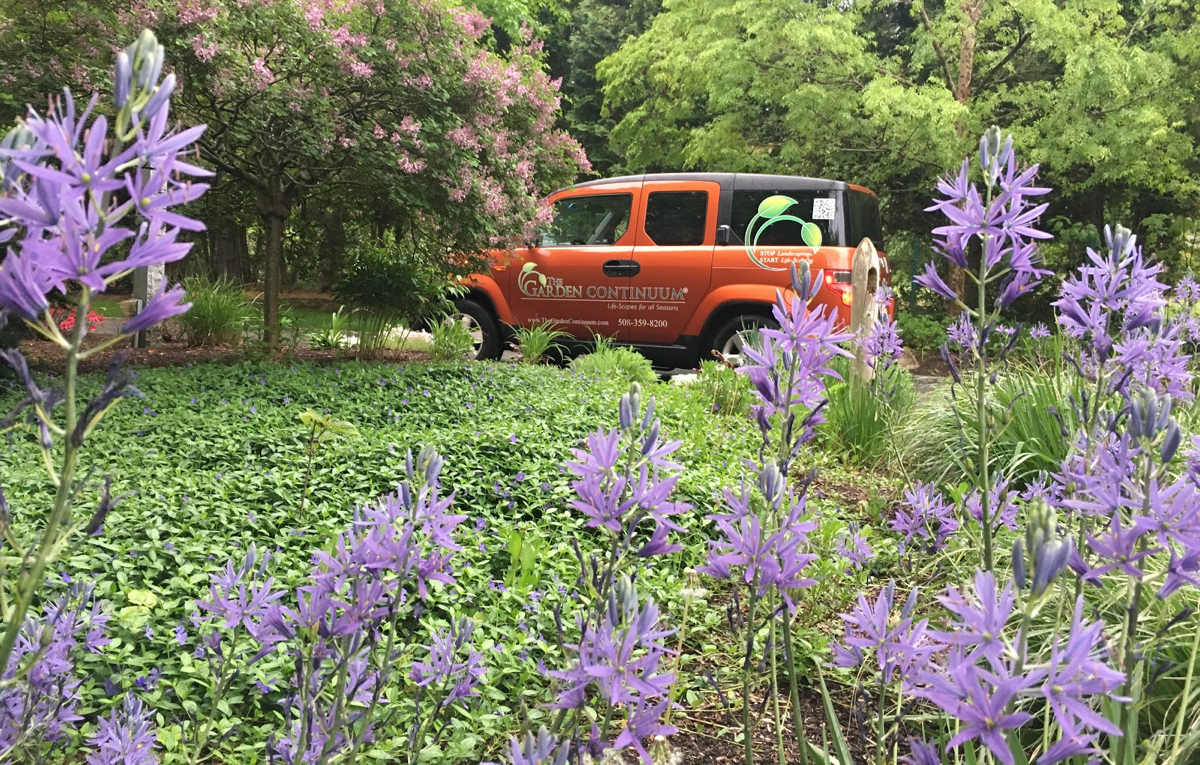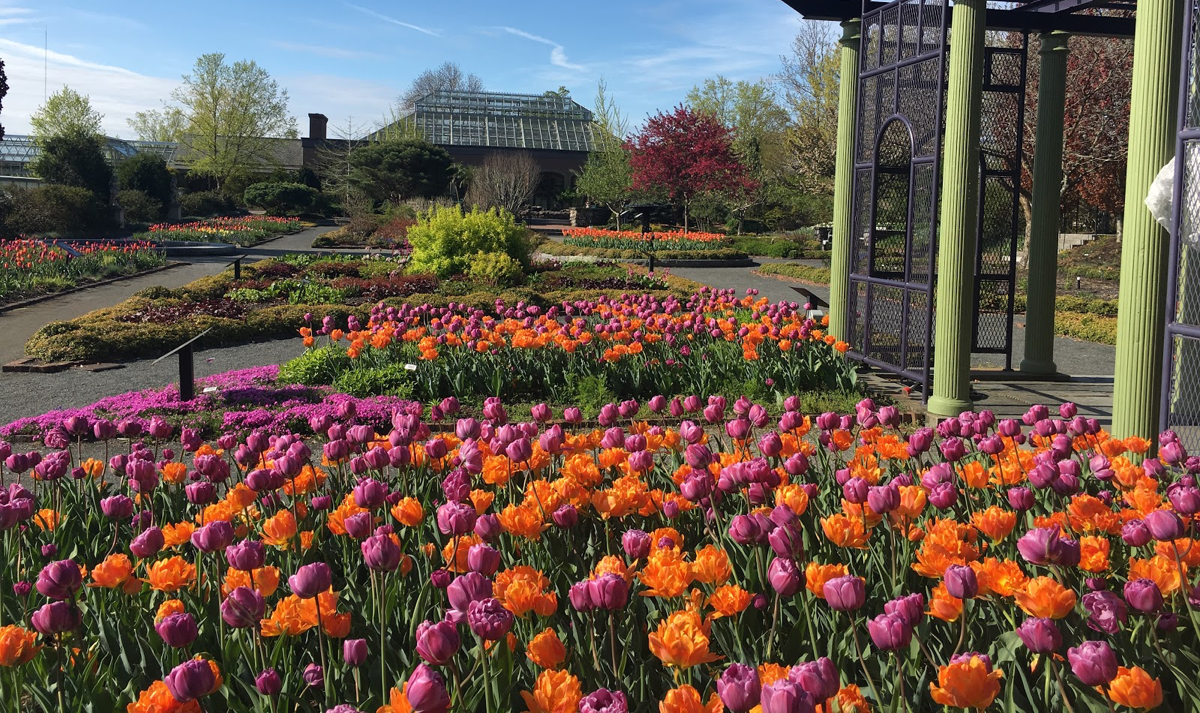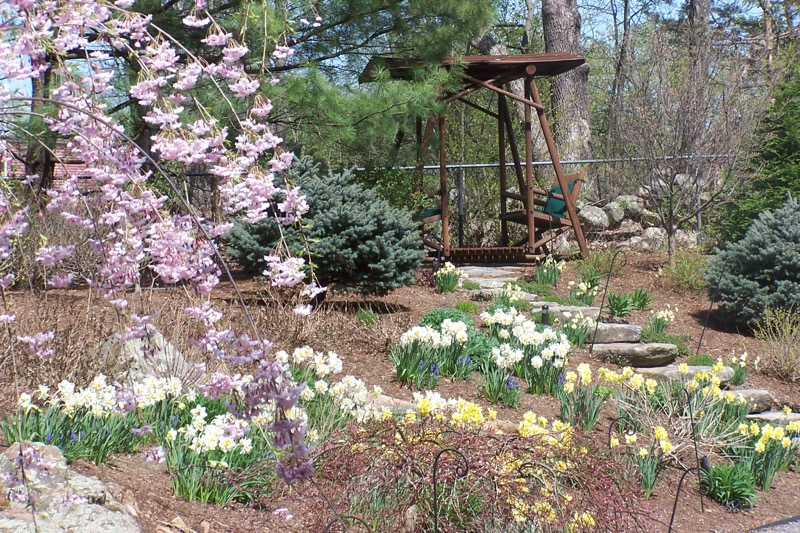Who doesn’t love spring? For New Englanders, the icy cold dullness of winter is on the way out, the sun is getting brighter and warmer, and nature’s renewal is in the air. But wait just a minute...there’s just one problem. That early seasonal transition from winter to the vibrant spring growing season is just plain, gray-brown dull.
From the end of March to as late as early May, nature’s busy generating new growth, it’s just not very colorful, and that makes for dull gardens. It’s enough to drive many gardeners to the brink of despair, desperate for more colorful signs of life. Fortunately, there’s a secret weapon to combat all this dullness: bulbs.
Bulbs are perhaps one of the most valuable and productive friends an ornamental gardener can have. Cared for properly, they seem to automatically provide life and color in a bleak landscape after a hard winter. They are springtime incarnate, bringing joy with every vibrant flower!
When you add bulbs, you are using plants that are ephemeral. That means they’re plants that are transitory, with a short life cycle, and they’re going to show off during their favorable period and fade away when it’s not so favorable. Bulbs are an astonishingly large category of flowers, so it’s important to know what you have so you’ll know how to care for it. Two of the most popular bulbs are tulips and narcissi (daffodils are a type of narcissi), but there are many others, such as hyacinths, camassia, scilla, crocus, lily, and fritillaria, to name a few.

A mix of Narcissi and Allium fill this driveway planting bed with early May flowers and fragrance while the Clethra, Potentilla, and Strax are still in winter slumber.
Fall is the best time to plant bulbs
That’s right. Remember, you’re planting them in the fall as a storage method. They’re going into the ground to rest up over the winter to be ready to start growing in the early spring when the frost disappears, moisture returns, and the soil warms up. Be sure to plant late in the fall, after the squirrels and chipmunks have finished collecting all their seeds and nuts, so they don't dig up your bulbs – flowering bulbs also do better when they’re planted as the weather gets colder. You can even plant bulbs in the winter if you get too busy in the fall, or just plain forget. I typically target the time between Halloween and Thanksgiving on the calendar as peak bulb planting time. Good for the bulbs and comfortable for me (the gardener)!
When spring rolls around, things begin to pick up speed. The soil life is still pretty groggy and waiting for the sun to warm up the soil environment. What’s at play here is “phenology.” Pardon me for getting scientific here for a second, but phenology is simply the study of periodic plant and animal life cycle events and how they’re influenced by seasonal climate variations.

Camassia explodes with purple blossoms in late May, just when the blue Vinca blooms emerge and the flowers of this tree-form Syringa meyeri ‘Palibin’ are just starting to peak forth.
As the soil warms up, heat begins to accumulate in it, generating something called “growing degree days.” For plants, there is a specific number of growing degree days that must be accumulated to trigger a phenological change, such as budburst. The point at which that happens is called the “growing degree threshold” and if it’s known for a particular plant, how soon that is reached can be determined by calculating accumulated growing degree days over the course of the season. If you’d like to know more about this, check out the National Phenology Network.
Back to our discussion about bulbs. If you have not planted bulbs before, there are essentially five basic steps for proper bulb-planting:
- Choose well-drained, slightly sandy soil to keep your bulbs from rotting
- Dig the proper hole – not too shallow or too deep. How do you know how deep? The bulb package will usually tell you.
- Plant bulbs in tight groups for maximum effect and color (just don’t have your bulbs touching)
- Gently cover the bulbs with soil and pack it down gently but fairly firmly
- Wait quietly for spring – and that’s it!
To learn more about proper planting, check out the short tutorial video in one of our previous blog posts.

Spring Tulip display at Tower Hill Botanical Gardens in Boylston, Massachusetts. While most of us don’t have this kind of room or budget - we can dream!
To get started with your fall bulb planting, it’s important to choose the right bulbs. Test small numbers of different bulbs in different areas of your garden to see what works best for you and your garden environment. Purchase 25 of this bulb and 25 of another and just try them out. They cost roughly $1 per bulb and they’re easy to order from one of the many reputable mail-order catalogs.
Bulb sizes indicate the circumference of the bulb, from small to top-size. If you buy a top-size bulb you are getting a much better bulb. It makes a difference. If you can spend enough for top-size bulb that is best. Be advised: Many of the box stores stock the lowest grade and smallest size bulbs, often called “standard,” and can yield less than satisfactory results. If you buy from a better garden center, catalog, or online – from a place that might get their bulbs directly from Holland -- you can invest in top-size bulbs. They may cost a little more, but the results are a lot better, serving up big, beautiful blooms.

TWEETABLE TIP
Bulbs are one of the most valuable friends an ornamental gardener can have. They provide life and color in a bleak landscape after a hard winter. They are springtime incarnate, bringing joy with every vibrant flower!
VIA @GardenContinuum

It may not seem like it, but spring is just a few months away. Putting plants in your garden that fill up this quiet and dull time of year is a great way to add early beauty to your gardens and lift your spirits. And if you’re looking to sell your house in the spring season, bulbs are great for adding colorful curb appeal.
Planting bulbs provides a lot of bang for the buck, especially if you know your site conditions. To learn more about that, check out the Picking Plants eBook. Now that you know more about bulbs, what to do and how to do it, it’s (almost) time to get planting!

Learn about Fine Gardening by downloading the eBook titled "The Fine Gardeners Guide to a Beautiful and Luxurious Landscape" today.











Leave a comment